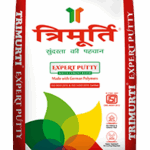
Are you considering pursuing a career in medicine? Look no further than the vibrant and diverse countries of Australia and the United States. With top-notch medical education systems, state-of-the-art facilities, and opportunities for global exposure, these countries have become popular destinations for students aspiring to become doctors.
The highly competitive MBBS programs in Australia or the USA offer an unparalleled education and training experience that prepares students to become competent and compassionate healthcare professionals.
In this blog, we will take a closer look at the MBBS programs in Australia and the USA, discussing their unique features, admission requirements, and career opportunities.
So, if you have your sights set on becoming a doctor and are wondering which country to choose, read on to discover all you need to know about pursuing an MBBS in the USA.
Understanding the MBBS Degree
Delving into the MBBS degree, one embarks on a captivating voyage through the realms of medical knowledge and practice. This esteemed undergraduate program stands as the bedrock for all aspiring physicians, offering a thorough immersion into both the science and art of medicine.
In Australia, this journey unfolds over a span of 5 to 6 years, a comprehensive path that molds students into adept medical professionals ready to face the dynamic healthcare landscape.
This curriculum is meticulously crafted, integrating theoretical knowledge with practical skills, to ensure that graduates are not just doctors, but caregivers, innovators, and ethical leaders in the field.
Doctor means healer in many languages. Becoming a doctor is different in America and Australia. In America, students must get a four-year bachelor’s degree first.
This gives them broad knowledge before medical school. Australia has a straight path to get an MBBS degree after high school. Both paths are hard but rewarding.
An MBBS program teaches human body parts, diseases, and treatments. Students learn from books and hands-on practice. They apply knowledge by caring for patients.
The journey transforms them into skilled, caring doctors. An MBBS proves academic excellence and readiness for the noble mission of healing people.
Navigating Through the Application Process
Applying to medical school takes strategy in both countries. In Australia, undergrads use scores from the ATAR test. Grads take the GAMSAT exam to show reasoning skills.
Strong letters of recommendation and a great personal statement are key too. The application process challenges students to prove their passion for helping others as future doctors.
Crossing the ocean to the United States, the adventure continues with the Medical College Admission Test (MCAT), a rigorous examination that tests knowledge of biological systems, physical principles, and verbal reasoning skills.
Following the MCAT, aspirants enter their details into the American Medical College Application Service (AMCAS), a centralized application processing service that requires meticulous attention to detail and an ability to showcase one’s achievements and aspirations succinctly.
Both application journeys demand not only academic prowess but also a demonstration of commitment to the medical profession through volunteer work, research experience, and extracurricular activities.
Embarking on this application voyage requires resilience, preparation, and a deep-seated drive to contribute to the future of healthcare.
By understanding each step and approaching it with confidence and clarity, candidates can navigate this process successfully, moving ever closer to the dream of wearing the white coat.
The Curriculum Breakdown
Exploring the curriculum of an MBBS program reveals a rigorous and fascinating journey through the landscape of medical science and practice.
In Australia, the adventure begins with foundational studies in biomedical sciences, covering critical topics such as anatomy, physiology, biochemistry, and pharmacology.
As students progress, they engage in more specialized subjects, including pathology, pediatrics, psychiatry, and surgery, among others. This structured approach ensures a holistic understanding of the human body and the myriad conditions that affect health and well-being.
Medical school is a big journey. It follows two paths in the United States and Australia. First, students learn the basics. This takes around two years. They study sciences like biology and physics. They also learn medical ethics and clinical principles. After that, students get hands-on training.
They work in different medical areas over the last years. This includes internal medicine, obstetrics, pediatrics, psychiatry, and surgery. Under doctor supervision, they diagnose and treat patients. This practice is crucial for applying what they’ve learned.
Both paths have the same goal, despite being structured differently. They push students to their limits, blending science with real practice. Students must be tough and adaptable. They don’t just memorize facts, but solve complex health issues.
They make critical choices and give caring treatment as medicine keeps changing. Between intense classes and hands-on work, MBBS students gain the knowledge and abilities to launch medical careers. They’re ready to improve healthcare and society.
Practical Training and Internships
For MBBS in Australia and America, hands-on practice is hugely important. After classroom learning, they dive into real clinical experience through practical training and internships. This on-the-job learning bridges the gap between studying theories and putting them into action.
Early in their studies, Australian medical students start hands-on learning. They work in city hospitals and rural clinics. This variety helps them learn many clinical skills.
It also teaches them about different healthcare needs across the country. Their training follows a careful plan. By the end, all students have the skills to care for patients with confidence and kindness.
In the United States, clinical rotations test students’ knowledge. They work in key areas like surgery, pediatrics, and psychiatry.
They learn to diagnose patients and manage complex cases. They must communicate well with different teams. All this happens under experienced doctors. This hands-on period shapes students into skilled future doctors ready for medicine’s demands.
Conclusion
Starting to earn an MBBS degree in Australia or the United States requires deep commitment to medicine. This pursuit demands dedication, resilience, and genuine care for improving patients’ lives.
The road to becoming a doctor involves rigorous academics, challenging exams, and intensive clinical training. However, the outcome offers a fulfilling career positively impacting lives.
Each step, from navigating complex applications to demanding internships and licensing, prepares students for vast responsibilities.
For those dreaming of significantly influencing global community health and well-being, understanding MBBS programs in the USA marks the first stride toward realizing that vision. Medicine’s pursuit means constant learning, growth, and excellence, promising a rewarding future for those willing to take on this challenging yet gratifying path.






